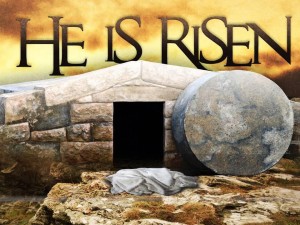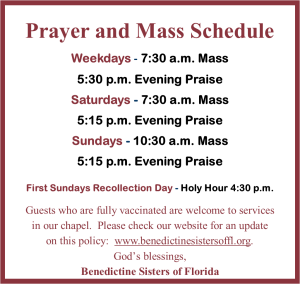 With the singing of Vespers this evening we begin our celebration of the feast of the Body and Blood of Christ – once called Corpus Christi (but that only refers to the Body of Christ).
With the singing of Vespers this evening we begin our celebration of the feast of the Body and Blood of Christ – once called Corpus Christi (but that only refers to the Body of Christ).
This one of my favorite feasts … it celebrates the ultimate in self-giving… not only to lay down one’s life for another but, further, to freely give its essence to another.
This particular version of the story of the feeding of the 5,000 is the only one of Jesus’ miracles to appear in all four Gospels. Luke places it between Herod’s question, “Who is this about whom I hear such things?” and Peter’s response to Jesus’ question about who he thought Jesus was. In Luke’s version of the feeding of the crowd it is not the result of Jesus’ compassion for the crowd but is an incentive to the disciples to do something about the problem they perceive. When they want Jesus to send the crowd away to so they (the crowd and themselves) can get something to eat, Jesus tells them to give the people some food on their own.
When we come to the Eucharistic table, hungry for the Word of God and the Body of Christ, what does the Jesus, in the person of the priest say? “Take, you all, and eat of this. Take, you all, and drink.” How contradictory, then it is, a few minutes later to hear the same person say to the worshiping community: “If you are not Catholic, fold your arms across your heart for a blessing.”
I recall in 1959-60 when our wood-frame convent was condemned by the fire department. The local community responded with open hearts to us when they were asked: “May we live with you until we can build a new house?” We certainly felt “welcomed as Christ” – the people viewed it a privilege to house the sisters and some of our boarding school students. They did not ask “are you Catholic” nor did we pick and choose a dwelling place based on a host’s church membership.
Today, everyday Jesus asks each of us … have you reserved a guest room in your heart for Me where I may rest, where I may eat a meal with you? We think about Benedict’s words “guests are always present, wash their feet, acknowledge them with a greeting or a nod, set a special place at the table for them, reverence Christ in the person of the guest. Our corporate commitment statement continues to challenge us to “respond with the compassion of Christ” to the variety of hungers of the human heart.
I agree with the author who says: “… Admittedly, hospitality won’t cure all of our ills. It won’t erase underlying problems that promote a climate of division or create a magical panacea for human suffering. But hospitality can help. It can assist and guide us in the way we deal with, and the ultimately solve our problems. It can allow us to function with grace and dignity. Hospitality is a seed planted deep within us that awaits our attention and care. Nurtured by willingness, watered by prayer, hospitality reflects the face of a loving, accepting, compassionate God. Wherever we go, whatever we do, we can pray that a spirit of hospitality will permeate our thoughts and animate our actions. (Everyday Hospitality by Thea Jarvis)
Pondering the significance of this feast, it strikes me that with Christmas we are touched with joy and awe at the birth of Christ. At Easter we explode with ALLELUIA at the resurrection of our Savior. The Ascension leaves us quietly looking upward, outward waiting in expectation for “what’s next?” Then comes the Solemnity of the Trinity – the mystery that baffles us … that God is so great, so awesome that only in three persons can all the divine manifestations be expressed. And, today; the solemnity of the Body and Blood of Christ – this touches, awakens in us feelings we can hardly express – that our God, our Jesus, our Savior would choose to gift us in such a personal, so intimate a way … the Creator chooses to be assimilated within the body of the creature. His body and blood become, over and over, absorbed into my body – His blood courses in my veins. Did you ever wonder how an aspirin knows where you ache is? Or an antibiotic knows what to attack? Is it heresy to say: Jesus attaches himself to every fiber of my being? When the minister looks us in the eye and greets us: “Body of Christ; Blood of Christ”, we are stunned speechless except to respond as we’ve been taught: “AMEN!”

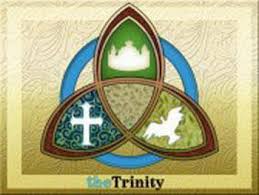
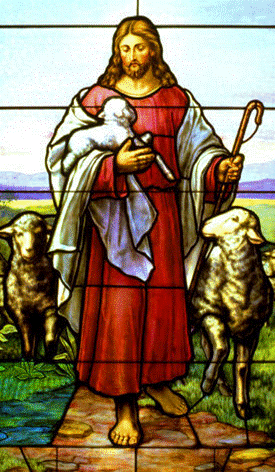
 Have any of your ever raised sheep? Or played with a lamb? Maybe you’ve seen or touched a lamb at a demo farm for children? Ok, so what we know about sheep we’ve learned from the media or in a science class. I’ll take it for granted that you are a little familiar with the metaphors of sheep and shepherds but no so much as those who listened to Jesus talking about shepherds tending their sheep. But, the image of Jesus as Good Shepherd has endured over the centuries as a primary image in our faith tradition. One of the few Christian symbols dating from the first century is that of the Good Shepherd carrying on His shoulders a lamb or a sheep, with two other sheep at his side.
Have any of your ever raised sheep? Or played with a lamb? Maybe you’ve seen or touched a lamb at a demo farm for children? Ok, so what we know about sheep we’ve learned from the media or in a science class. I’ll take it for granted that you are a little familiar with the metaphors of sheep and shepherds but no so much as those who listened to Jesus talking about shepherds tending their sheep. But, the image of Jesus as Good Shepherd has endured over the centuries as a primary image in our faith tradition. One of the few Christian symbols dating from the first century is that of the Good Shepherd carrying on His shoulders a lamb or a sheep, with two other sheep at his side.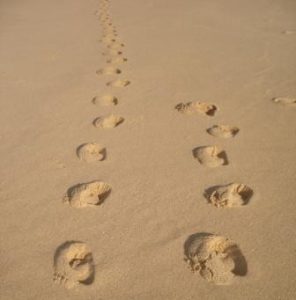 In each scene (of my life) I noticed footprints in the sand.
In each scene (of my life) I noticed footprints in the sand.
